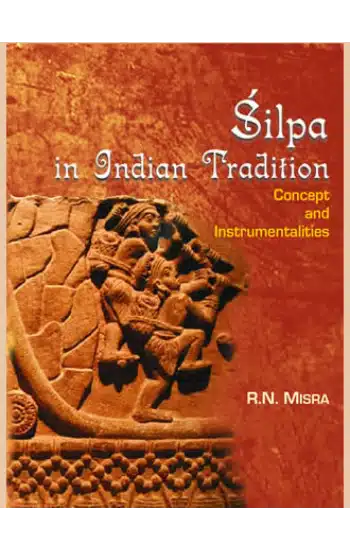
Save: 15%

Save: 15%
SILPA IN INDIAN TRADITION: Concept and Instrumentalities
Publisher:
| Author:
| Language:
| Format:
Publisher:
Author:
Language:
Format:
₹1,250 ₹1,063
Save: 15%
In stock
Ships within:
In stock
| Book Type |
|---|
ISBN:
Page Extent:
The book attempts to examine certain basic conceptualizations about art (silpa), artists (silpi) and the canon (sastra), the three defining elements in traditional Indian sculptures. It takes up issues concerning the valorization and devaluation of silpa, including its concordance with form (rupa), its secular domain and, for that reason, its vulnerability. Using both textual and epigraphic sources, its section on artists and craftsmen of different order ? Kokasa lineage of a millennium-long standing included ? deals with the question of their historical antecedents, anonymity, organization, operations and activities, work culture, authority, discipline and dissent, pecuniary gains, and the patronage that made their work possible. In the section on the canon (sastra), an attempt has been made to underscore their operational and aesthetic bearings in the works of art, within the framework of traditional Indian poetics and iconography. The book also has an appendix on masons? marks which serve as the silent assertions of ancient artists? identity and have a presence from second century bce to seventeenth century.
The book attempts to examine certain basic conceptualizations about art (silpa), artists (silpi) and the canon (sastra), the three defining elements in traditional Indian sculptures. It takes up issues concerning the valorization and devaluation of silpa, including its concordance with form (rupa), its secular domain and, for that reason, its vulnerability. Using both textual and epigraphic sources, its section on artists and craftsmen of different order ? Kokasa lineage of a millennium-long standing included ? deals with the question of their historical antecedents, anonymity, organization, operations and activities, work culture, authority, discipline and dissent, pecuniary gains, and the patronage that made their work possible. In the section on the canon (sastra), an attempt has been made to underscore their operational and aesthetic bearings in the works of art, within the framework of traditional Indian poetics and iconography. The book also has an appendix on masons? marks which serve as the silent assertions of ancient artists? identity and have a presence from second century bce to seventeenth century.
About Author
Reviews
There are no reviews yet.
Related products
HERITAGE OF RAJASTHAN: Monuments and Archaeological Sites
Save: 15%
HINDU AND BUDDHIST MONUMENTS AND REMAINS IN SOUTHEAST ASIA
Save: 15%
NARRATIVE OF THE INDIAN REVOLT: From its Outbreak to the Capture of Lucknow
Save: 15%
EIGHTEEN FIFTY SEVEN : Revolt and Contemporary Visuals
Save: 15%
RELATED PRODUCTS
BEYOND POTS AND PANS: A Study on Chalcolithic Balathal
Save: 15%
Burhanpur: Unexplored History, Monuments And Society
Save: 15%
DIALOGUE OF CIVILIZATIONS: William Jones and the Orientalists
Save: 15%
Early History Of Varanasi: Recent Excavations At Rajghat
Save: 15%
Harappan Studies: Recent Researches In South Asian Archaeology (Vol. Ii)
Save: 15%
HERITAGE OF RAJASTHAN: Monuments and Archaeological Sites
Save: 15%
HINDU AND BUDDHIST MONUMENTS AND REMAINS IN SOUTHEAST ASIA
Save: 15%
NARRATIVE OF THE INDIAN REVOLT: From its Outbreak to the Capture of Lucknow
Save: 15%
RAJASTHAN : Prehistoric and Early Historic Foundations
Save: 15%
The Sacred Landscape Of Mundeshwari: The ‘Oldest Living’ Temple
Save: 15%
THE ARCHAEOLOGY OF MIDDLE GANGA PLAIN: Excavations at Agiabir
Save: 15%
THE INDUS CIVILIZATION: An Interdisciplinary Perspective
Save: 15%



Reviews
There are no reviews yet.